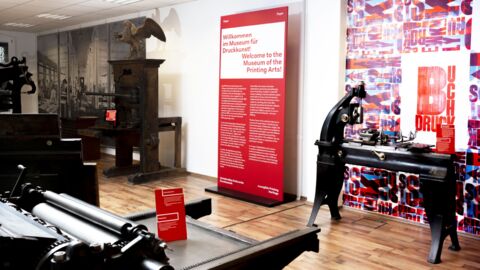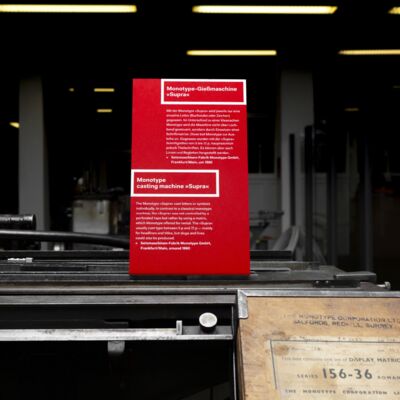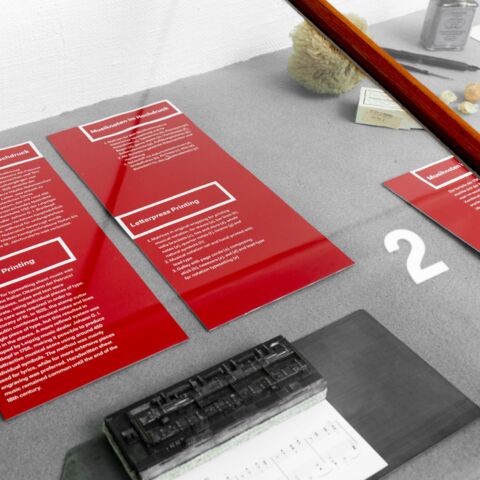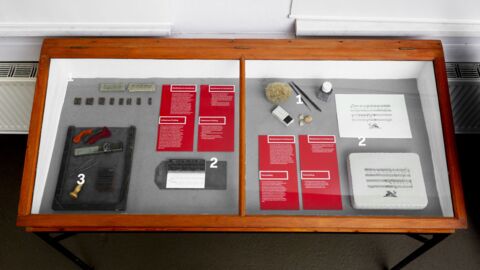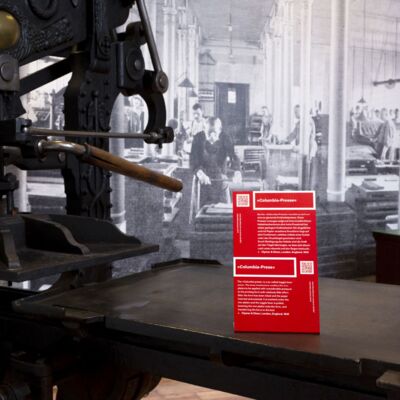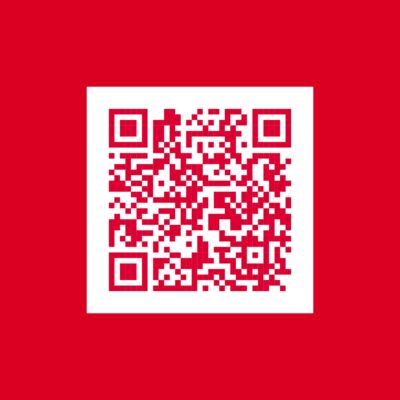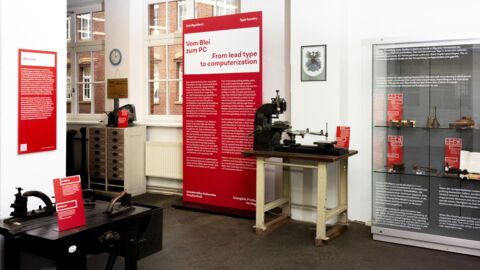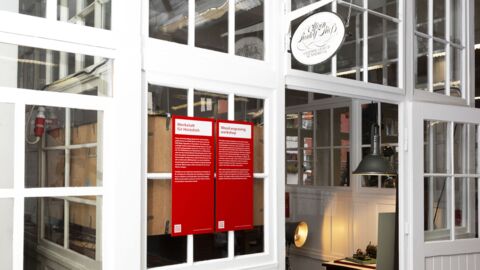Konzeption und Design • Infoleitsystem • Signaletik • Touchpoint für digitalen Content
(English Text below)
Das 1994 gegründete Museum für Druckkunst Leipzig ist eine der führenden Institutionen in der Bewahrung und Dokumentation drucktechnischer Maschinen und Artefakte aus 550 Jahren Druckgeschichte in Deutschland.
Founded in 1994, the Museum für Druckkunst Leipzig is one of the leading institutions in the preservation and documentation of printing machines and artefacts from 550 years of printing history in Germany.
(English Text below)
Das 1994 gegründete Museum für Druckkunst Leipzig ist eine der führenden Institutionen in der Bewahrung und Dokumentation drucktechnischer Maschinen und Artefakte aus 550 Jahren Druckgeschichte in Deutschland. Das Museum — gelistet im Verzeichnis des immateriellen Kulturerbes der Deutschen UNESCO-Kommission — stellt historische Maschinen nicht nur aus, sondern versteht sich als voll funktionsfähiges Werkstattmuseum, in dem sich Drucktechniken hautnah erfahren lassen. Somit ist das Museum für Druckkunst nicht nur ein Ort lebendiger Industriekultur, sondern ein Anlaufpunkt für kreativ Schaffende, Forschende, TypedesignerInnen und TypographInnen. Das Museum ist ein offener Ort des Austauschs, richtet die Typotage sowie weitere Konferenzen im Feld zeitgenössischen Type Designs aus, veranstaltet Symposien und eine Vielzahl einzigartiger Sonderausstellungen.
Vom Museum wurden wir beauftragt, ein Infoleitsystem zu entwickeln, welches der immensen Größe des Museums und Vielfalt der Sammlung gerecht wird, die verschiedenen Etagen und Themenbereiche gliedert sowie schnell erfassbare Navigationselemente und nach Bedarf fundierte Informationen bereitstellt. Als agile Institution, war dem Museum die Verbindung des Infoleitsystems mit digital verfügbarem Content ein zentrales Anliegen.
•
Founded in 1994, the Museum für Druckkunst Leipzig is one of the leading institutions in the preservation and documentation of printing machines and artefacts from 550 years of printing history in Germany. The museum — listed in the list of intangible cultural heritage of the German UNESCO Commission — not only exhibits historical machines, but also sees itself as a fully functional workshop museum where printing techniques can be experienced at first hand. Thus, the Museum für Druckkunst is not only a place of vibrant industrial culture, but also a meeting spot for creatives, research scientists, type designers and typographers. The museum is an open place of exchange, hosts the Typotage as well as other conferences in the field of contemporary type design, organises symposia and a variety of unique special exhibitions.
We were commissioned by the museum to develop an information signage system that would do adequate credit to the immense size of the museum and the diversity of the collection, structure the various floors and thematic sections, and provide quick navigation elements and in-depth information as needed. As an agile institution, the connection of the information signage system with digitally available content was a central concern for the museum.
Mehr Informationen
